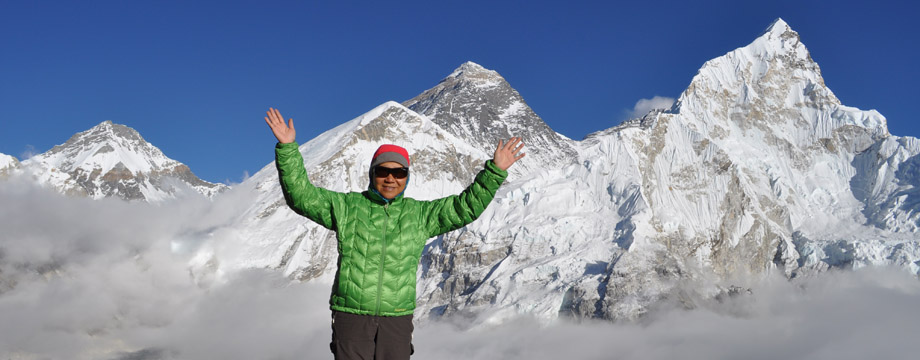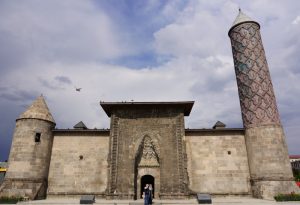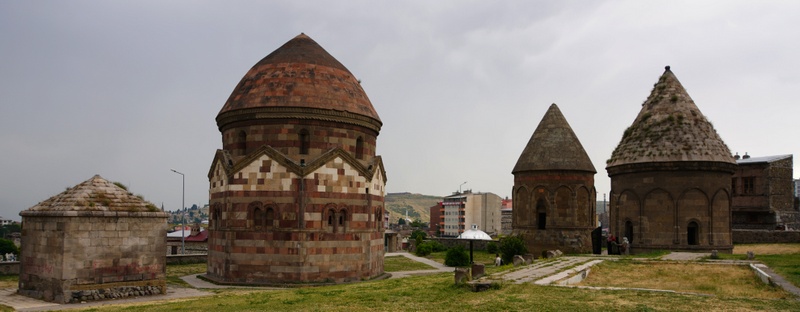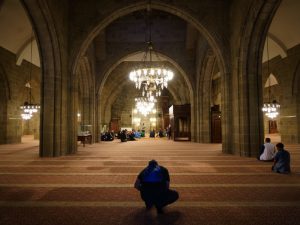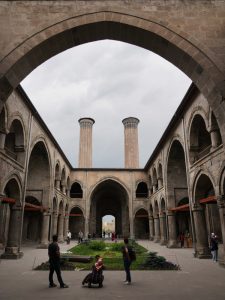Eastern Turkey: Trabzon, Artvin & Erzurum July 3 – 6, 2019
Trip Plan
I have been to Turkey four times and all the countries bordering it at the east and the southeast namely i.e. Georgia, Armenia, Iran, Iraq, Syria and Lebanon. But I have never been to Eastern Turkey. As I have to fly Turkish Airline to Moscow to catch a flight to Anadyr to join an expedition to Wrangel Island from July 22 to August 5, I take this opportunity to make a stop-over to explore this unknown region. I look for travel mates: only Kylie can join from July 3 to 15. My journey from the Black Sea to Mt Ararat, Van and the Upper Mesopotamia, the cradle of civilisation, is most interesting and exceeds my expectations.
July 3 Monday: Hong Kong – Istanbul, Turkey – Trabzon
Our 12-day tour with Alkan Tour would begin in Trabzon on the Black Sea on July 5. We decided to fly earlier before the airfare went up. Alkans Tour kindly provided us with two free nights of accommodation in Trabzon. We departed Hong Kong at midnight on Turkish Airline and arrived in Istanbul around 5:30 am. As I had not checked through to Trabzon, I had to pick up my luggage and checked in again. Kylie who already got her boarding pass at the Hong Kong Airport, could go to the domestic departure hall direct.
Anyway, it was a blessing in disguise. I was able to mull around to explore the new Istanbul Airport and worked out the logistics to catch my flight to Moscow on July 20. I discovered a few things. First, the airport hotel charges over €140 a night. I immediately ruled out spending the night of July 19 at the airport hotel. Second, if I had to return to the Istanbul airport on July 19, I could check in and possibly spend a night at the airport lounge. Third, it is possible to check in my luggage through to Moscow in some major domestic airports and I would be fine as long as I would be at the gate around 9:30 am on July 20. I kept my option open and would decide later.
Our plane to Trabzon was delayed for over half an hour and did not depart till 11 am. It was after 12:30 pm when we landed. I picked up my luggage at the domestic airport while Kylie’s luggage was missing. What happened was that her luggage had to be picked up at the international airport which is located at the other side of the airport complex. By the time we met up with our driver Burhan and arrived at Usta Park Hotel, it was after 2 pm.
As our room was not yet ready, we sat at the lobby and discussed with Burhan what to do the next day. Burhan does not speak English. As a result, we called Sabahattin who translated for us and told Burhan where to take us. Kubra, a nice local girl from the hotel who speaks English and some Chinese, also helped with the translation. Finally, we would pay Burhan €90 for a day trip to see four attractions. Kubra kindly offered to take us around after work at 5 pm.
Our hotel is centrally located: next to the Meydan Park and close to everything. The first thing we did was to take a shower and freshened up. Then we went out to find a money changer and got 5.61 Turkish lire (TL) to 1 USD.
Trabzon located on the Black Sea and founded some 4,000 years ago, was historically known as Trebizond. It has been an important trading post on the Silk Road and a melting pot of religion, languages and culture for centuries and a trade gateway to Persia in the southeast and the Caucasus to the northeast. It became the capital of the Trebizond Empire beginning in 1204 till the conquest by Sultan Mehmed II in 1461.
Trabzon is bustling and lively. The main street is lined with banks while small local shops, tea houses and eateries scattered all over the side streets. We were amazed to see half a dozen of museums, mosques and churches, countless jewellery, herbal and dress shops.
The cheerful and care-free atmosphere is most enchanting. I can picture what Marco Polo might have seen while visiting the city in the 13th century.
We strolled aimlessly in the city centre for over an hour. While on the way back to the hotel to meet Kubra, we ran into her on the main street. We were keen to have fish. Kubra took us to a nice seafood restaurant. We had a fresh seabass and a fish soup for 68TL.
After dinner, we returned to the hotel and watched sunset from the restaurant on the seventh floor. Fairly good though not spectacular!
It’s too early for bed. We returned to the park, watching men dancing and locals hanging out. We picked up a lot of nice brochures from the Tourism Office and looked at desserts and olive oil from local shops.
We were exhausted and went to bed early. I had an excellent sleep.
July 4 Tuesday: Excursion and City Tour
We got up early and had a breakfast on the seventh floor. We watched the calm Black Sea at sunrise while enjoying our breakfast.
Our tour began at 9 am. Our first stop was the Sumela Monastery of the Black Virgin (located about 48 km from Trabzon in the Altindere National Park).
We drove a short way up the Zigana Valley and passed through Macka. We paid 5TL for a short ride from the car park to the monastery. The money was well-spent. Otherwise we might have to spend 45 minutes on a steep hike to the monastery. We walked ten minutes to the entrance of the archaeological site and paid 10 TL.
A staircase leads to a viewing platform. I saw a rock church, a few chapels and the back of the high-rise monastery blocks perching on a 300m-high cliff. I guessed the rock church and chapels were the older part of the complex.
We could not enter and tour around the monastery. On the way to the bus stop, we stopped at a ruin with a chapel. From here, we had spectacular views of the photogenic monastery and the landscape.
I learnt more about the interesting history of the monastery from Sabahattin the following day. This has been a monastic site as early as the 4th century AD. According to the legend, two Athenian Greek priests found a miraculous icon of Virgin Mary in a cave on a mountain. This icon was said to be made by St Luke in Athens and carried by angels to Trabzon and put into this cave. In 386 AD, the two priests decided to create a house for the icon: this cave or hollow today forms the centre of the monastery. But one cannot see the cave from the viewing platform.
The monastery had a renowned monastic community partly because of its remarkable location and the ascetic principles characterised by the early years of Christian monasticism. The monastic community here had played an important part in the many political and religious debates and conflicts during the Byzantine period and during the Kingdom of Trebizond. While Sumela’s political influence ceased after 1461 under the Ottoman rule, its religious community continued until the breakup of the Ottoman Empire. The present buildings probably date from the 12th century and the frescos from between 1710 and 1860.
In the latter part of the First World War Trabzon was occupied by Russian forces and the Christian communities became involved in the ethnic struggles that preceded and accompanied that occupation. In 1923, as a part of the post war settlement between Greece and the new Turkish Republic, the Christian population of Turkey was exchanged for the Muslim population of Greece (with a few exceptions). The buildings which had fallen into a dilapidated state, have been restored recently. On August 15, 2010, Istanbul’s Greek Orthodox Patriarch Bartholomew held the first mass since 1923 on the occasion of the feast of the Dormition of the Theotokos to commemorate the “falling asleep” or ascension of the Virgin Mary into heaven.
We drove back to the city and went to Hagia Sophia. Built between 1238 and 1263 as a Greek monastery church, it was converted into a mosque in 1511 after Sultan Mehmet conquered Trabzon. It is one of a few dozen Byzantine sites still extant in the area.
The building was restored in 1958-1962 and opened as a museum after 1964. The main building and the bell tower built around 1426 are still under restoration. Visitors come to appreciate the architecture and the beautiful frescoes on the walls of the western entrance.
Our third stop was the Sera Lake which has a length of 1200m and an average width of 150m. It was formed in 1950 when the area of the Sera River was blocked by a landslide. While the lake is a favourite spot for locals, we are not impressed. I think country parks and reservoirs in Hong Kong are more picturesque. Anyway, we had a rest: Burhan had fish for lunch, Kylie had tea while I had two scoops of ice cream.
The last stop was the Atatürk Pavilion. Located in a small pine grove in the Soğuksu district, this house was built as a summer house in 1890 by a banker Konstantin Kabayanidis. This elegant building with European and Western Renaissance influences, has commanding views of Trabzon, the surrounding areas and the Black Sea. The banker presented it as a gift to the state in 1923. President Atatürk visited it in September 1924 and stayed here for two nights in 1930.
On the way to the hotel, we saw the fortress and the Ortahisar (the largest and oldest settlement in the city) from a distance. Burhan dropped us off at the hotel shortly around 3:30pm. The sun was still very hot. We had a rest and decided to have an early dinner. We had a fresh seabass and a trout in a local eatery opposite the hotel for 60TL. Delicious and cheap!
We spent the next three hours exploring the city on foot. We deliberately got ourselves lost in the labyrinth of narrow alleys soaking in the atmosphere.
We saw remnants of the city walls which is close to the main market. We went in a large two-storeyed wooden building which turns out to be the main vegetable and fruit market.
We stopped at a couple of bakeries and watched bread-making. I had free tasting of several types of bread. Great experience!
Kylie found a couple of herbal shops and bought olive soap and essence oil.
We saw many traditional inns from the Ottoman period. The most well-known one is Alacahan a three-storeyed stone building which has been nicely restored.
We had a great day!
12-Day Eastern Turkey Tour (July 5 – 16)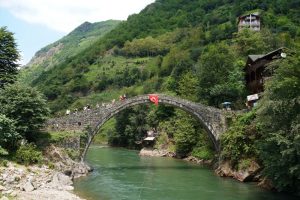
Day 1 Wednesday: Trabzon – Adyer – Zikale – Artvin 250km
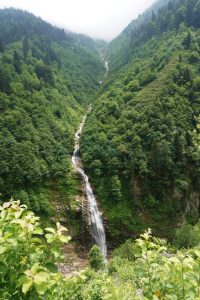 At 9 am, we met Sabhattin, our guide cum driver. I have talked with him over WhatsApp many times. His family-run tour company is based in Van. He drove 700km to Trabzon and did not arrive till midnight. No doubt, he looked tired and yearned a dozen times.
At 9 am, we met Sabhattin, our guide cum driver. I have talked with him over WhatsApp many times. His family-run tour company is based in Van. He drove 700km to Trabzon and did not arrive till midnight. No doubt, he looked tired and yearned a dozen times.
We set off shortly after 9 am and drove along the highway D010 next to the Black Sea. We had a brief stop at a tea plantation and tasted the tea. We did not buy any as the quality is not as good as those at home.
We turned off D010 after Rize and drove along the Firtina Creek. There are several Ottoman bridges and we stopped a couple times to take photos.
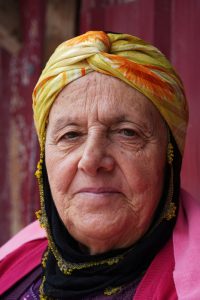 We had a pleasant drive to Ayder a lovely pastoral highland which resembles the Swiss Alps. Arab tourists who love this region for its sea and green landscape, have come in troves. As a result, Ayder is messy and built-up with numerous guesthouses, hotels, restaurants, cafes, playgrounds and swings, and souvenir shops. Traffic congestion is a problem.
We had a pleasant drive to Ayder a lovely pastoral highland which resembles the Swiss Alps. Arab tourists who love this region for its sea and green landscape, have come in troves. As a result, Ayder is messy and built-up with numerous guesthouses, hotels, restaurants, cafes, playgrounds and swings, and souvenir shops. Traffic congestion is a problem.
The weather was unstable. We had showers and intermittent sunshine. We saw a couple of waterfalls and had river trout for lunch (20TL for a grilled trout). The fish was fresh. But the chef had put too much salt over it.
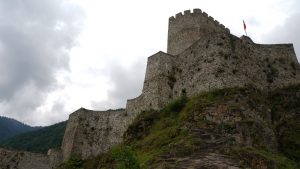 After Adyer, we drove along another valley that leads to the Zikale Castle.
After Adyer, we drove along another valley that leads to the Zikale Castle.
The atmospheric medieval castle possibly built in the 14th-15th century is one of the most important historical structures in the area. Strategically located at an altitude of 1,130m at the edge of a cliff overlooking the Firtina Creek in the Firtina Valley (Stormy Valley), the picturesque castle consists of outer walls, middle walls and inner castle. There are garrison quarters and a head tower.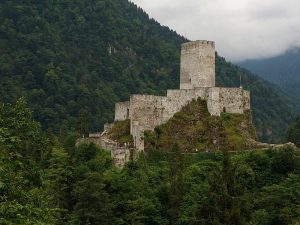
I like this castle, a hidden gem in the mountains. We left after 4:30pm and had a brief stop at look at an Ottoman bridge which has a high arc.
We were back on highway D010. After Hopa which is close to the border with Georgia, the road turns south running parallel to the mountain range which forms the natural border between Turkey and Georgia.
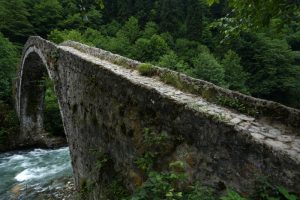 We followed the Chorokhi River and saw Borcka Dam and later Artvin Dam. We were glad to arrive at the new Grand Artvin Hotel around 7pm. Sabahattin was exhausted.
We followed the Chorokhi River and saw Borcka Dam and later Artvin Dam. We were glad to arrive at the new Grand Artvin Hotel around 7pm. Sabahattin was exhausted.
After dropping our luggage, we followed Sabahattin to a food court next to the hotel. I had yoghurt drink and chicken for dinner. We had a spacious room and could still smell the fresh paint.
Day 2 Thursday: Artvin – Erzurum 300km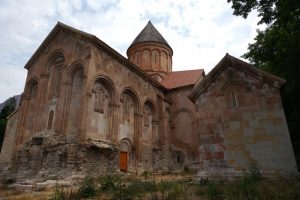
Sabahattin had a good rest and was ready for another long day’s drive. State road D950 links Artvin to Erzurum. The first part of the driving would be demanding as the road winds through mountains. We went through some 40 tunnels.
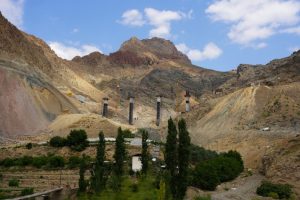 We drove through the Coruh Valley characterised by beautiful wild landscapes all along the raging river. We only made a detour along D060 (Kars Artvin Yolu) along the Oltu Stream in order to visit the Ishan Church dedicated to the Virgin Mary in 1006 in the mountain village of Ishan.
We drove through the Coruh Valley characterised by beautiful wild landscapes all along the raging river. We only made a detour along D060 (Kars Artvin Yolu) along the Oltu Stream in order to visit the Ishan Church dedicated to the Virgin Mary in 1006 in the mountain village of Ishan.
It was once an Armenian then a Georgian bishopric. I find the ruins atmospheric. Unfortunately, the key-keeper of this church was away and we could not enter. We could only take a couple of photos from the outside.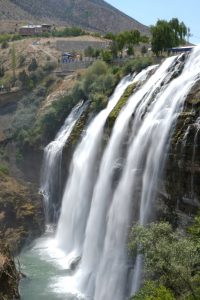
Next, we stopped at the Tortum Waterfall. This picturesque waterfall is the largest in the country.
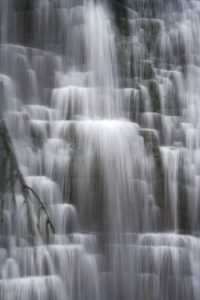 A boardwalk has been built to enable visitors to walk down a fairly steep slope to view the falls from the river. Part of the boardwalk was broken. I was a bit scared and walked with extreme caution.
A boardwalk has been built to enable visitors to walk down a fairly steep slope to view the falls from the river. Part of the boardwalk was broken. I was a bit scared and walked with extreme caution.
The falls are picturesque. I do not like water sprays on my camera. Hence, I only took a few photos from a safe distance.
 I enjoyed the walk. We had fresh trout for lunch again and only paid 35 TL for two big grilled trout with salad. Very cheap!
I enjoyed the walk. We had fresh trout for lunch again and only paid 35 TL for two big grilled trout with salad. Very cheap!
After lunch, we drove to visit the Osvank Monastery which was constructed between the years 963 and 973 and was dedicated to St. John the Baptist. It was one of the most important bishoprics in the region and an important cultural centre especially famous for its rich manuscripts.
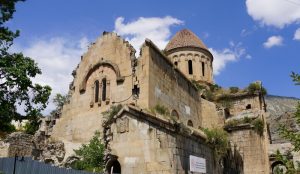 The church is by far the largest cruciform-shaped church in the region. The monastery included a church, a refectory and a scriptorium.
The church is by far the largest cruciform-shaped church in the region. The monastery included a church, a refectory and a scriptorium.
Today, it is under renovation. With the permission of the man in charge of the works, we slipped in to look at the inside which is in bad conditions. But we could still see some faint frescoes.
We continue along Lake Tortum and reached Erzurum before 4 pm.
Brief History of Erzurum
Located on a plateau at an altitude of 1757m above sea level, Erzurum owing to its strategic location has its place in history. It had been under the Urartian, Armenian, Roman and Umayyad before the arrival of Seljuk Turks. The Seljuk Empire (1037-1194) founded by Tughril Beg (1016-1063) and his brother Chaghri Beg (989-1060), was a high medieval Turko-Persian empire originating from the Qiniq branch of Oghuz Turks near the Aral Sea. The Seljuks conquered most of Anatolia from the Byzantine Empire which became one of the reasons for the first crusade (1095-1099).
The Saltukids ruled the Anatolian beylik (principality) centred in Erzurum from 1071. At its greatest extent, the Seljuk Empire controlled a vast area stretching from western Anatolia and the Levant to the Hindu Kush in the east and from Central Asia to the Persian Gulf in the south. The Seljuks played an important role in the development of the Turko-Persian tradition and exporting Persian culture to Anatolia. The empire later went into decline.
Mongols, nomadic tribes from the present-day Mongolia, arrived. Erzurum fell to the Mongol siege in 1242 and was looted and devastated. The Mongol Empire (1206-1294) established by Genghis Khan (c.1162-1227) though short-lived, was the largest contiguous land empire in history. The Mongols then divided Anatolia into emirates eventually one of these, the Ottoman, conquered the rest and established the Ottoman Empire (1299-1922/1923). In 1453 Mehmed the Conqueror captured Constantinople ending the Byzantine (Eastern Roman) Empire (395-1453).
After the departure of the Mongols, this region came under the control of the Trebizond Empire (1204-1461), the Black Sheep Turkmen, White Sheep Turkmen, Safavid Persia before it was taken by the Ottoman under Selim in 1514. Erzurum was the main military base of the Ottoman Empire in the region.
Erzurum was taken by Nader Shah during the Ottoman-Persian War (1730-35) and returned to the Ottoman in 1747. Since early 19th century, the Russian Empire which harboured design in the region, captured the city in 1829, during the Russo-Turkish War (1877-78) and in 1918 after the battles between the Ottoman and Russian empires during WWI.
In 1919, Mustafa Kemal Ataturk resigned from the Ottoman Army in Erzurum and the Erzurum Congress of 1919 was one of the starting points in the Turkish War of Independence. Known as “The Rock” in NATO code, Erzurum served at the NATO’s southeastern-most air force post during the Cold War.
Erzurum’s coat-of-arms is the double -headed Anatolian Seljuk Eagle, a common symbol throughout Anatolia and the Balkans in the medieval period. But little of medieval Erzurum survives with the exception of the citadel fortress and the 13th century Twin Minaret Madrasa. Today, the city with a population over 400,000 is a university town and popular up-market ski destination.
We spent almost two hours in the city. First, we went to the Yakutiye Madrasah built in 1310. This indoor madrasah with four iwans now houses the Turkish-Islam Arts and Ethnography Museum.
Though small, the museum is beautiful with exhibits in 12 sections well-presented with English interpretations. Traditional women’s jewellery and clothing, weapons, men’s jewellery & accessories, Masjid, metalworks, weaving, Madrasah education, writing sets and seals, sects and weighing instruments, Erzurum home life (Tandoor Room with a dovetail ceiling), Seljuk ceramics and coins are neatly presented.
Next to the madrasah is the Lalapasa Mosque built by the Ottoman. We walked along Cumhurlye Street to reach the Twin Minaret Madrasah. It is a two-storeyed grand building with Seljuk architectural style. There is a tomb chamber behind the mosque.
A short distance away is Űc Kümbetler with three small Seljuk mausoleums with near-conical roofs. The larger one (octagonal in shape) is believed to be the tomb of Emir Saltuk who ruled in the late 11th century. The two smaller 12-sided ones probably date from the 14th century.
The sky darkened: storm was coming. We hurried back to the Ulu Camii (Grand Mosque). It started to rain. We stayed in the mosque while Sabahattin fetched the car.
The mosque commissioned by Saltukid ruler Nasr-al-Din Muhammad and built by Abu-al-Fath Muhammad in 1179, is the city’s oldest mosque. Measures 41m long and 54m wide, the mosque looks spartan but serene with 28 freestanding piers carrying the roof structure, capped by a hipped roof on the exterior.
There are three mihrabs on the qibla wall. The interior is decorated with geometric motifs commonly used in the 12th century.
Models of the three holiest sites in Sunni Islam namely Kaaba and Al-Masjid al- Haram in Mecca, Al-Masjid an-Nabawi in Medina and Al-Aqsa Mosque (Dome of the Rock in Jerusalem), are displayed inside.
By the time we came out, the storm was over. But poor Sabahattin was soaking wet. We arrived at Renaissance Polat Hotel before 6 pm and had a relaxing evening. We had buffet dinner at the hotel which was full of group tours. We had trouble even in finding a table!

